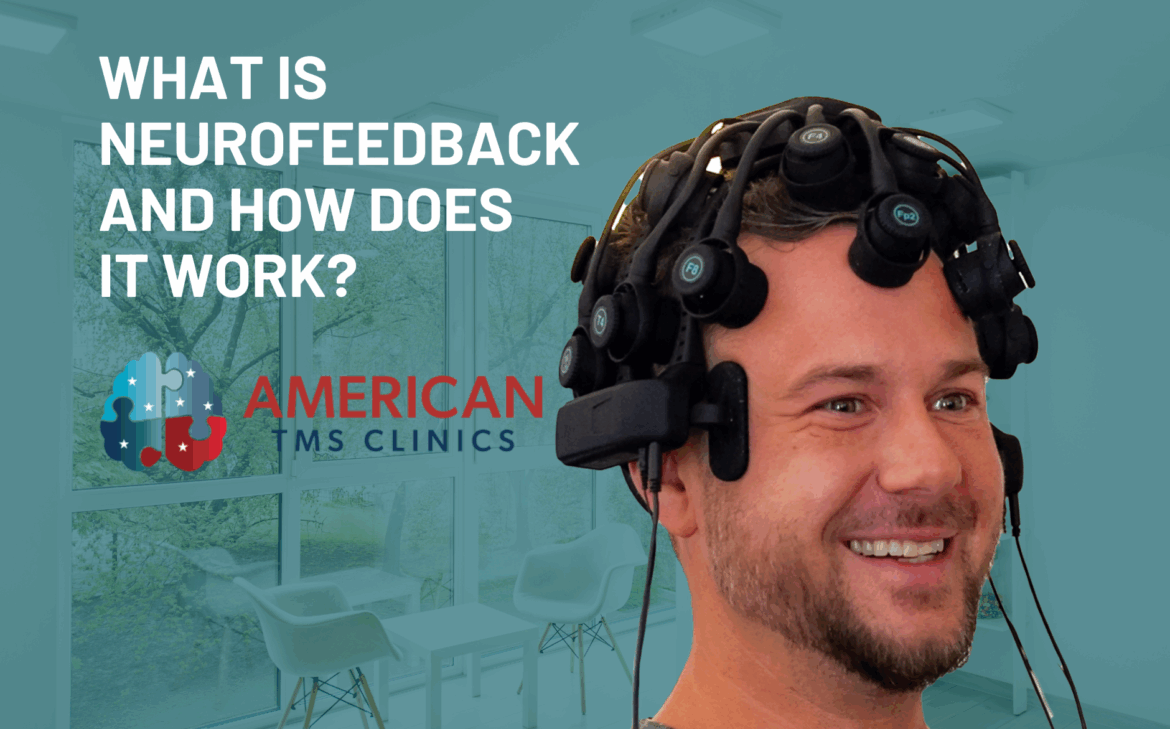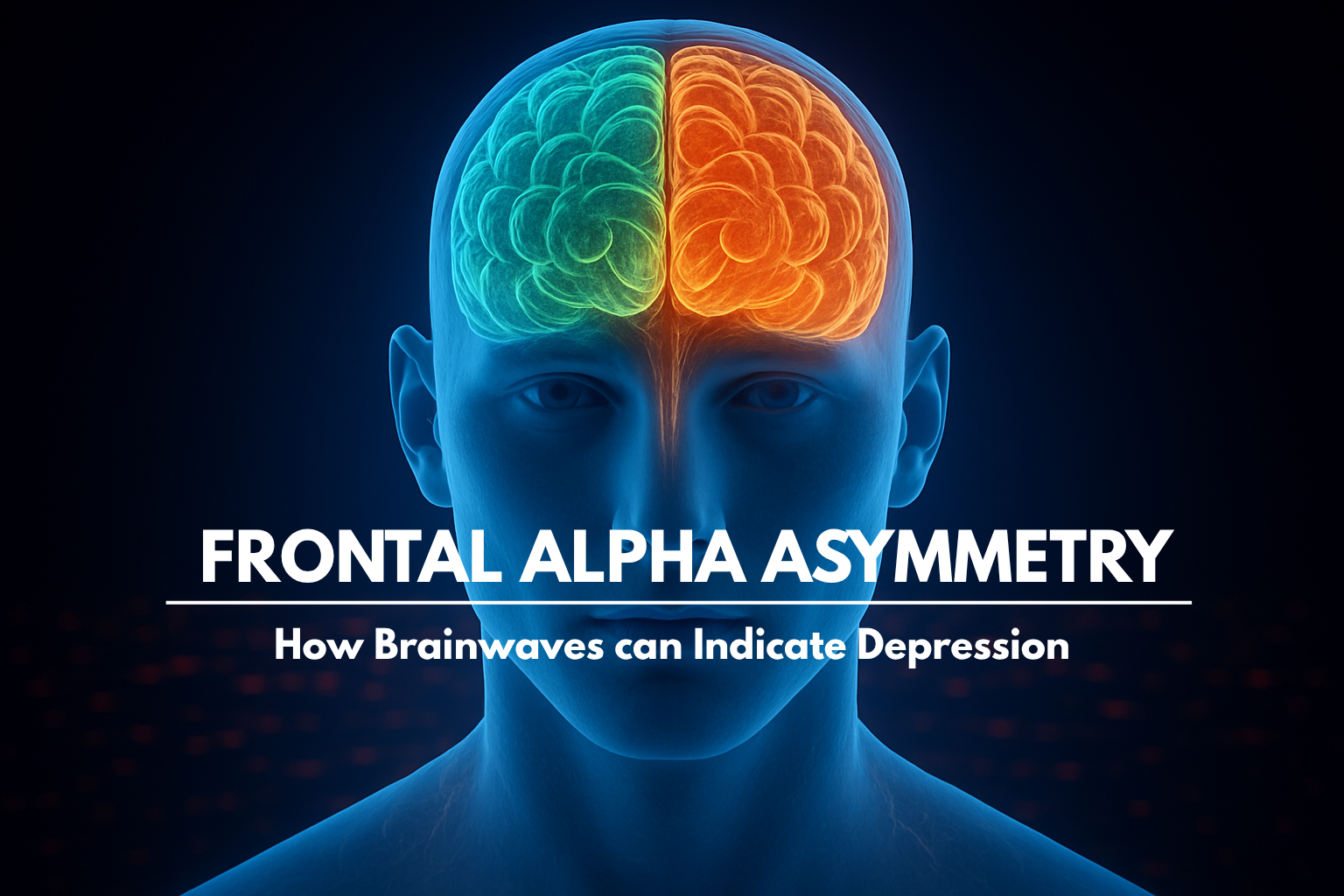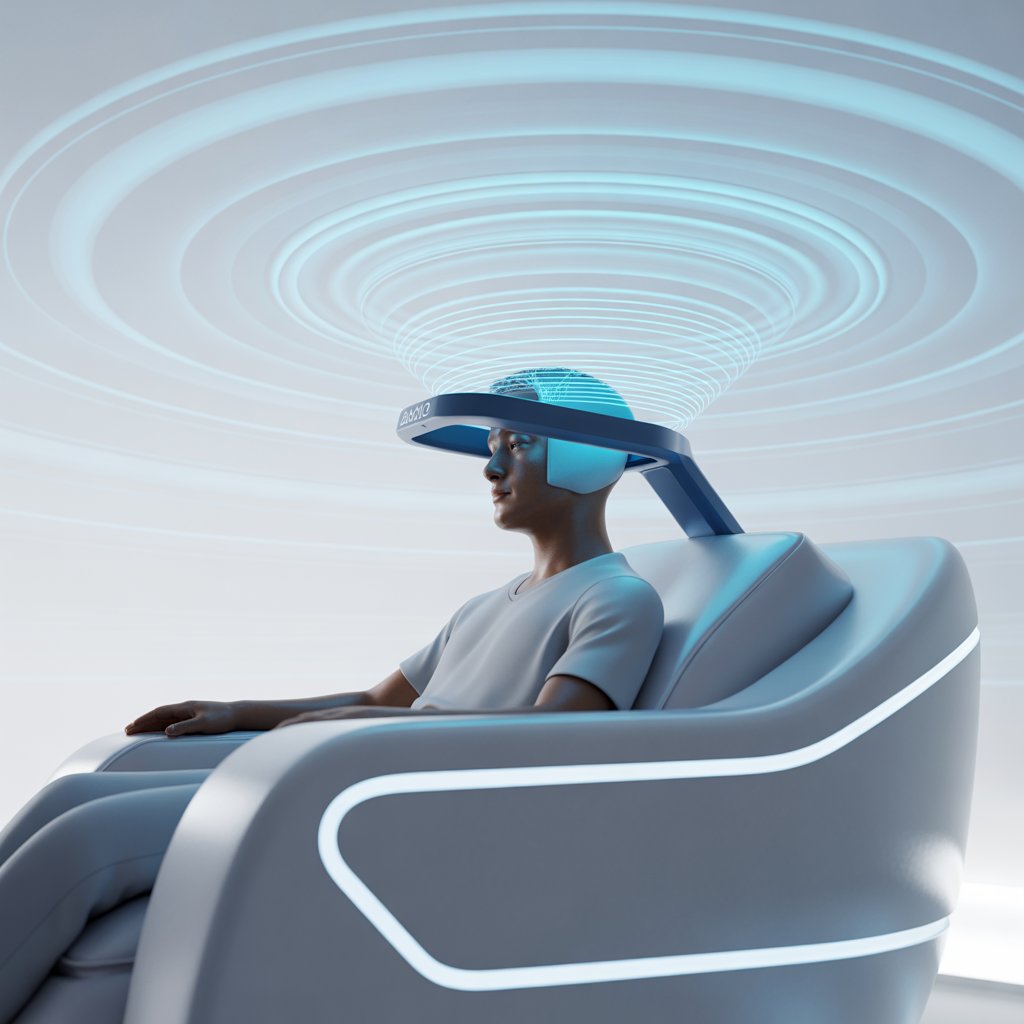If you’re looking for a drug-free way to improve focus, sleep, mood, or overall mental clarity, neurofeedback might be worth exploring. This cutting-edge therapy taps into the brain’s own natural ability to self-regulate and heal, and it’s gaining traction for a wide range of conditions, including ADHD, anxiety, PTSD, and sleep disorders.1 But what exactly is neurofeedback, and how does it work? What Is Neurofeedback Therapy? At American TMS Clinics, we use advanced neurofeedback systems to help patients improve their focus, mood, sleep, and emotional regulation, all without medication. How Does Neurofeedback Work?Your brain operates using electrical patterns called brainwaves. These brainwaves fall into five key categories with differing general characteristics:Delta – sleep, repair, complex problem solving, deep-unconsciousness1 Theta – creativity, insight, optimal meditative state, depression, anxiety1 Alpha – peacefulness, relaxation, alertness1 Beta – focused thinking, sustained attention, excitement1 Gamma – problem solving, mental sharpness, cognitive processing1Neurofeedback works by monitoring these brainwaves in a subject. Practitioners can then change the amplitude or speed of specific brain waves in particular brain locations to treat various conditions.1 What to Expect During a Neurofeedback SessionAt American TMS Clinics, your neurofeedback journey begins with a QEEG brain map (quantitative electroencephalogram). This brain map identifies areas of dysregulation or over/under-activity.Your therapy plan is then customized to your unique brain profile. During each session:Sensors are placed on your scalp to monitor brain activity. You’ll watch a movie or play a game on-screen. When your brain shifts into a desired state, the program provides visual or auditory rewards—helping reinforce healthier brainwave patterns.If the patient loses focus, the screen will turn black which gets them the ability to see where they lose attention. Most patients attend 20–40 sessions, and many start noticing improvements within the first 10. Conditions Neurofeedback Therapy Can Help Treat Neurofeedback is used to treat a wide range of neurological and emotional conditions. At American TMS Clinics, we offer neurofeedback as part of a holistic mental health solution for: ADHD & Attention Disorders – Neurofeedback acts as a rehabilitation approach in the treatment for ADHD, without medication. In ADHD, the goal is to decrease the brain activity in the theta band and increase its activity in the beta band.1 Anxiety & Panic Attacks – Anxiety is believed to inhibit the brain’s alpha waves.1 Therefore, researchers believe that using Neurofeedback alpha training (through the alpha protocol) can potentially relieve that anxiety.1 Insomnia & Sleep Disorders –Those who usually spend an hour or more falling asleep, can fall asleep faster using Neurofeedback training.1 Depression & Mood Instability – There is evidence that supports the positive effects of Neurofeedback on depression, including behavioral changes, neural changes (measured through fMRI BOLD activity), and scalp EEG recordings. These behavioral changes were found to be consistent with those observed in patients treated with antidepressants.2 Cognitive Performance – Studies have shown that professional athletes have differing brain patterns from beginners.1 Neurofeedback can be used to improve the athlete’s psychomotor and self-regulation ability, their confidence, and subsequent performance.1 Neurofeedback can be used for self-improvement, psychological centering, or spiritual practice.2 Neurofeedback is especially appealing to those looking for alternatives to medication. Is Neurofeedback Safe? Neurofeedback gives individuals a more active role in their own health care, utilizes a holistic approach to body, mind, and spirit, is non-invasive, and elicits the body’s own healing response.2The most common side effect is temporary fatigue after a session. All sessions at American TMS Clinics are supervised by trained professionals. Why Choose Neurofeedback at American TMS Clinics? We combine neurofeedback therapy with other evidence-based treatments like Transcranial Magnetic Stimulation (TMS) to offer personalized care for mental health conditions. Whether you’re seeking help for focus issues, stress, sleep, or trauma, our integrated approach offers a safe, natural way to retrain your brain. Schedule a Neurofeedback Consultation Today Ready to learn if neurofeedback therapy is right for you? Contact American TMS Clinics in Scottsdale today to schedule your initial brain map and consultation. Start training your brain for better focus, mood, and clarity—without medication. References |

- August 7, 2025
- by Kaitlyn Anderson
- Neurofeedback
- 846 Views
Kaitlyn has obtained a M.S. in Psychology and has her SHRM-CP. She has over 10 years of experience working in the medical technology industry, including mental health, remote patient monitoring and care coordination.
Related Post
- by Isaac Barnes
- November 19, 2025
Frontal Alpha Asymmetry: How Brainwaves can Indicate Depression
In the age of technological advancement, we have more neurodiagnostic tools than ever to get a better picture of many
- by Isaac Barnes
- November 13, 2025
TMS vs TES: Which Type of Brain Stimulation
Mental health challenges are on the rise more than ever, which means people are looking for cutting edge mental health
- by Isaac Barnes
- November 6, 2025
How Does TMS Work? The Magic of Magnets
With the rise in mental health disorder prevalence, people are increasingly seeking out therapies that treat the root of the
- by Isaac Barnes
- November 5, 2025
Seasonal Affective Disorder and TMS – How it
With the onset of Fall and Winter comes a wave of depression called Seasonal Affective Disorder (SAD). This is a




